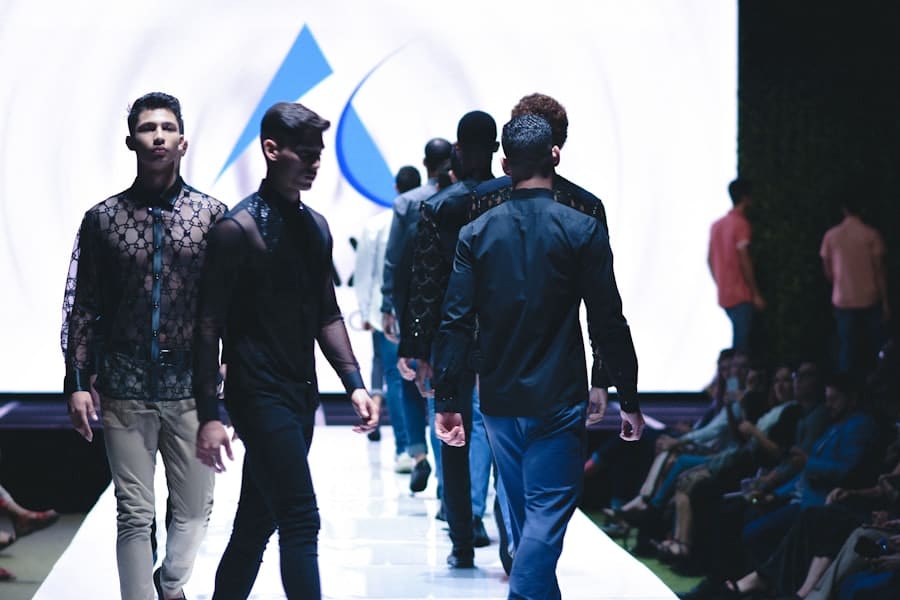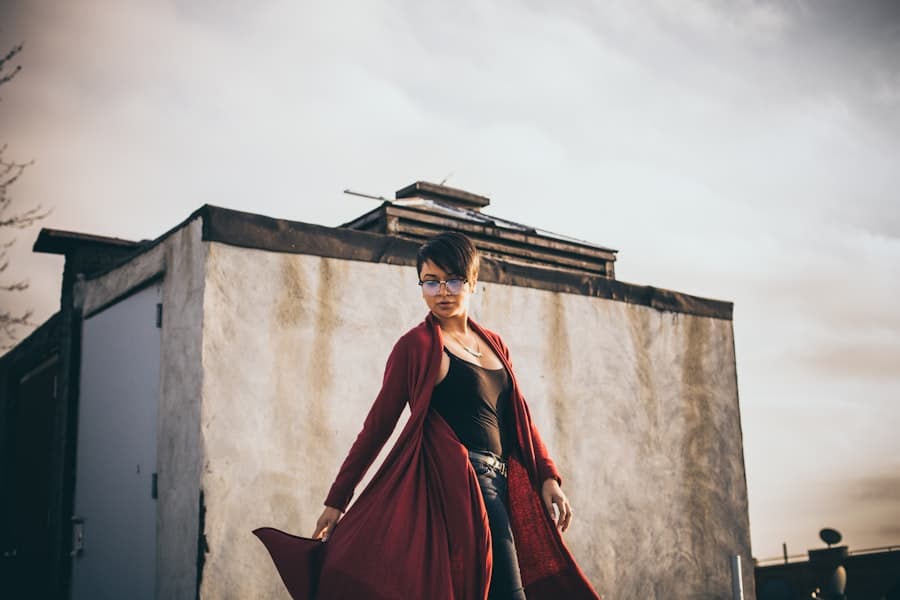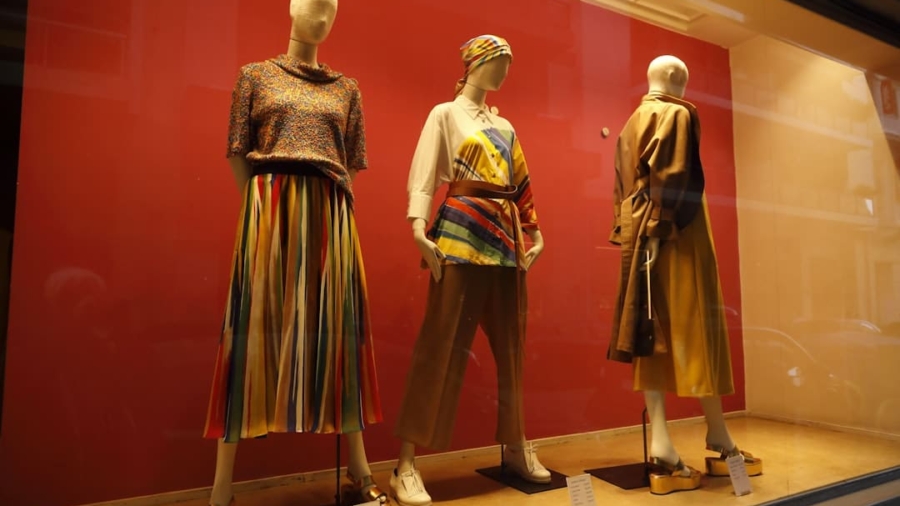The fashion industry has always been at the forefront of innovation, constantly evolving to meet the demands of a dynamic consumer base. In recent years, augmented reality (AR) has emerged as a transformative force, reshaping how fashion shows are conceived and executed. The rise of AR fashion shows can be traced back to the increasing integration of technology into everyday life, particularly as smartphones and wearable devices have become ubiquitous.
Designers and brands are now leveraging AR to create immersive experiences that transcend traditional runway presentations, allowing audiences to engage with collections in unprecedented ways. One of the most significant catalysts for the rise of AR fashion shows was the COVID-19 pandemic, which forced many physical events to be canceled or postponed. In response, designers sought alternative methods to showcase their collections, leading to a surge in virtual and hybrid formats.
AR technology enabled brands to create interactive experiences that could be accessed from the comfort of home, allowing viewers to visualize garments in 3D and even try them on virtually. This shift not only expanded the reach of fashion shows but also democratized access to high-fashion events, allowing a broader audience to participate in the excitement of new collections.
Key Takeaways
- AR fashion shows are becoming increasingly popular, offering a new and innovative way to showcase fashion collections.
- AR technology is revolutionizing the fashion industry by allowing for virtual try-ons, interactive experiences, and personalized shopping.
- Hosting hybrid AR fashion shows can provide the benefits of reaching a wider audience, reducing environmental impact, and creating unique and memorable experiences.
- Creating an engaging AR fashion show experience involves incorporating interactive elements, storytelling, and seamless integration of virtual and physical elements.
- The future of AR fashion shows holds potential for even more immersive and interactive experiences, blurring the lines between physical and virtual fashion shows.
How AR Technology is Changing the Fashion Industry
AR technology is revolutionizing the fashion industry by enhancing the way consumers interact with products. Through AR applications, users can visualize clothing items in their own environment or on their own bodies, bridging the gap between online shopping and physical retail experiences. For instance, brands like Gucci and Zara have developed AR features within their mobile apps that allow customers to see how a piece of clothing would look on them before making a purchase.
This capability not only reduces the uncertainty often associated with online shopping but also increases consumer confidence in their buying decisions. Moreover, AR is facilitating a more personalized shopping experience. By utilizing data analytics and machine learning algorithms, brands can tailor AR experiences to individual preferences, showcasing items that align with a consumer’s style and past purchases.
This level of customization enhances customer satisfaction and fosters brand loyalty, as consumers feel more connected to brands that understand their unique tastes. Additionally, AR technology allows for interactive storytelling, where brands can create narratives around their collections that resonate with consumers on an emotional level, further deepening engagement.
The Benefits of Hosting Hybrid AR Fashion Shows

Hybrid AR fashion shows combine the best elements of physical and digital presentations, offering numerous benefits for designers and brands alike. One of the primary advantages is the ability to reach a global audience without the constraints of geographical limitations. Traditional fashion shows are often exclusive events attended by industry insiders, but hybrid formats allow anyone with an internet connection to participate.
This inclusivity not only broadens brand visibility but also fosters a sense of community among fashion enthusiasts worldwide. Another significant benefit of hybrid AR fashion shows is the opportunity for real-time interaction and feedback. During a live-streamed event, viewers can engage with designers and models through social media platforms, asking questions and sharing their thoughts on the collection as it unfolds.
This immediate feedback loop can provide valuable insights for brands, helping them understand consumer preferences and trends in real time. Furthermore, hybrid shows can incorporate interactive elements such as polls or quizzes, enhancing viewer engagement and making the experience more memorable.
Tips for Creating an Engaging AR Fashion Show Experience
To create an engaging AR fashion show experience, brands must prioritize user experience and interactivity. One effective strategy is to incorporate gamification elements into the presentation. For example, viewers could earn points or rewards for participating in interactive features such as virtual try-ons or sharing their favorite looks on social media.
This not only incentivizes engagement but also encourages viewers to share their experiences with others, amplifying brand reach. Additionally, storytelling plays a crucial role in captivating an audience during an AR fashion show. Brands should craft compelling narratives that highlight the inspiration behind their collections, weaving in elements of culture, art, or personal anecdotes from designers.
By creating a narrative arc that resonates with viewers emotionally, brands can foster a deeper connection with their audience. Utilizing high-quality visuals and sound design can further enhance this storytelling aspect, immersing viewers in a multisensory experience that leaves a lasting impression.
The Future of AR Fashion Shows
As technology continues to advance, the future of AR fashion shows looks promising and full of potential. One area poised for growth is the integration of artificial intelligence (AI) with AR technology. AI can analyze consumer behavior and preferences to create hyper-personalized experiences during fashion shows.
For instance, AI algorithms could suggest specific outfits based on a viewer’s past interactions with a brand’s app or website, making the experience even more tailored and relevant. Moreover, advancements in wearable technology may lead to new ways for consumers to engage with AR fashion shows.
This could include details about fabric composition, care instructions, or even styling tips from fashion experts. Such innovations would not only enhance the viewing experience but also provide valuable information that empowers consumers in their purchasing decisions.
Overcoming Challenges in Hosting Hybrid AR Fashion Shows

While hybrid AR fashion shows offer numerous advantages, they also present unique challenges that brands must navigate. One significant hurdle is ensuring that the technology functions seamlessly during live events. Technical glitches or connectivity issues can detract from the overall experience and frustrate viewers.
To mitigate this risk, brands should conduct thorough testing of all technological components prior to the event and have contingency plans in place for potential issues. Another challenge lies in striking the right balance between digital and physical elements. While AR technology can enhance engagement, it is essential not to overshadow the artistry and craftsmanship inherent in fashion design.
Brands must ensure that the digital experience complements rather than detracts from the garments themselves. This requires careful planning and collaboration between designers, technologists, and marketing teams to create a cohesive vision that resonates with audiences.
Case Studies of Successful Hybrid AR Fashion Shows
Several brands have successfully embraced hybrid AR fashion shows, setting benchmarks for others in the industry. One notable example is Balenciaga’s Fall 2021 collection presentation, which utilized a combination of physical models and digital avatars in an immersive virtual environment. Viewers could interact with the collection through an app that allowed them to explore garments up close and even customize colors and styles in real time.
This innovative approach not only showcased Balenciaga’s cutting-edge designs but also highlighted the potential of AR technology in creating unique consumer experiences. Another successful case study is Tommy Hilfiger’s “See Now, Buy Now” initiative, which integrated AR into its runway shows by allowing viewers to purchase items directly from their mobile devices during the event. By combining live-streaming with interactive features such as virtual try-ons and instant purchasing options, Tommy Hilfiger created an engaging experience that blurred the lines between runway presentation and retail shopping.
This approach not only drove sales but also demonstrated how hybrid formats could redefine traditional fashion show dynamics.
The Impact of AR Fashion Shows on Consumer Engagement
The impact of AR fashion shows on consumer engagement is profound and multifaceted. By providing immersive experiences that allow consumers to interact with collections in real time, brands are fostering deeper connections with their audiences. This heightened level of engagement translates into increased brand loyalty as consumers feel more invested in the stories behind each collection.
Furthermore, AR fashion shows are reshaping consumer expectations regarding how they interact with brands.
This shift will challenge companies to continually innovate and adapt their marketing strategies to meet evolving consumer preferences.
In conclusion, augmented reality is not just a passing trend; it represents a fundamental shift in how fashion is presented and consumed. As technology continues to evolve, so too will the possibilities for creating engaging and memorable experiences that resonate with consumers on multiple levels. The future of fashion lies at the intersection of creativity and technology, where AR plays a pivotal role in shaping new narratives and redefining industry standards.
In the rapidly evolving world of fashion, the integration of augmented reality (AR) into fashion shows is creating a new paradigm for hybrid events. This innovative approach not only enhances the visual experience but also broadens accessibility for global audiences. A related article that delves into the technological advancements facilitating such transformations is “SmartSender: Your Chatbot Platform for Seamless Customer Interactions.” This piece explores how cutting-edge technology, like chatbots, is revolutionizing customer engagement across various industries, including fashion. For more insights, you can read the full article here.
FAQs
What is an AR fashion show?
An AR fashion show is a fashion show that incorporates augmented reality technology to create a virtual and interactive experience for the audience. It allows viewers to see virtual models showcasing the latest fashion designs in a digital environment.
What are hybrid events?
Hybrid events are events that combine in-person and virtual elements, allowing both physical and remote attendees to participate and engage with the event. This format offers flexibility and accessibility to a wider audience.
How do AR fashion shows function as hybrid events?
AR fashion shows function as hybrid events by blending the physical runway show with virtual elements. They allow remote viewers to experience the fashion show through augmented reality technology, creating an immersive and interactive experience from anywhere in the world.
What are the benefits of exploring AR fashion shows as hybrid events?
Exploring AR fashion shows as hybrid events offers several benefits, including increased accessibility for a global audience, the ability to showcase fashion designs in a unique and innovative way, and the potential for greater audience engagement through interactive features.
How does augmented reality enhance the fashion show experience?
Augmented reality enhances the fashion show experience by allowing viewers to see virtual models wearing the latest designs in a digital environment. It creates a more immersive and interactive experience, enabling viewers to engage with the fashion show in a unique and innovative way.

